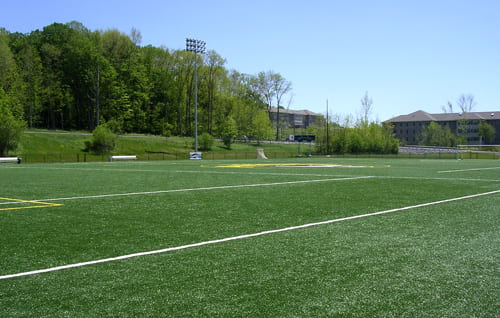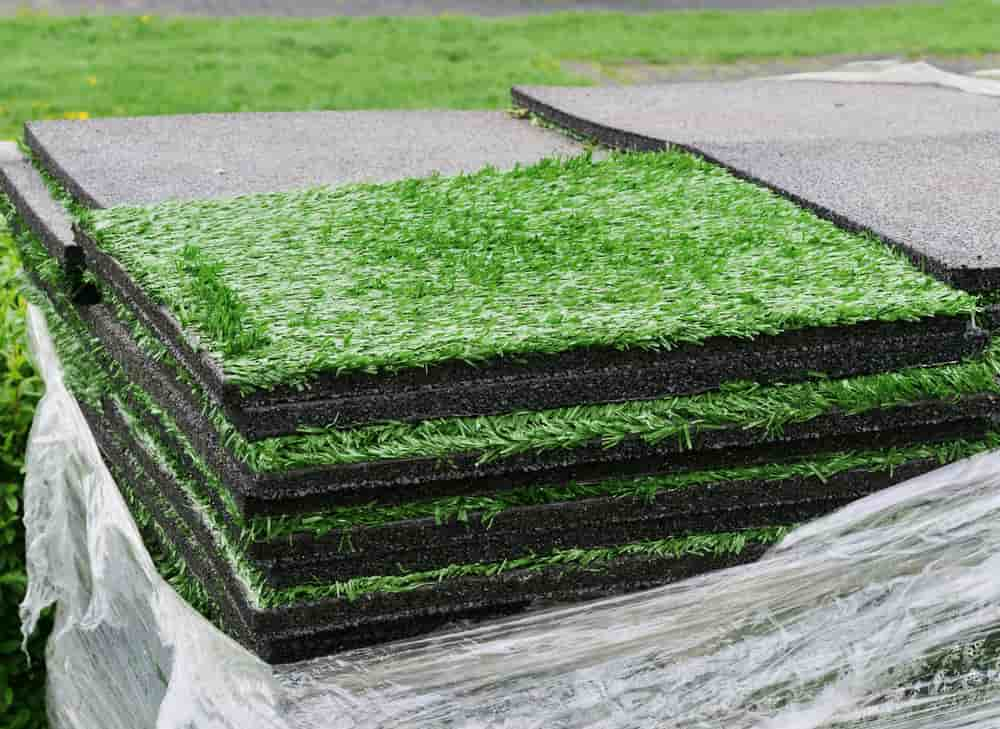See Why Homeowners Prefer Synthetic Grass for Sustainable Landscape Design Practices
As house owners progressively prioritize sustainability in landscape design, synthetic lawn has arised as a compelling option to traditional yard. Its capacity to preserve water, minimize maintenance initiatives, and lessen ecological influence placements it as a sensible selection for those seeking eco-friendly remedies. The visual charm and adaptability of man-made lawn provide to varied style preferences. The effects of this shift expand past plain benefit and aesthetic appeals, prompting a better examination of just how these selections affect more comprehensive ecological outcomes. What stays to be checked out is the complete extent of benefits that synthetic grass can supply to house owners and the atmosphere alike.
Water Conservation Advantages
Among the most considerable advantages of synthetic grass is its function in water preservation. Typical grass lawns need considerable quantities of water to keep their lavish look, usually bring about overuse of neighborhood water resources, specifically in deserts. On the other hand, synthetic grass eliminates this need totally, as it does not need watering. This not just saves water however also decreases the strain on municipal water systems, especially during dry spell conditions.
Additionally, the installation of synthetic grass can add to a much more lasting landscape. Property owners can considerably lower their water expenses, enabling reallocation of sources to various other ecological efforts or household usages. In addition, man-made lawn is designed to hold up against numerous climatic problems without the requirement for supplemental watering, making it an excellent option for regions facing water shortage.
The ecological benefits extend beyond instant water savings. By decreasing water consumption, man-made grass assists to mitigate the influences of climate adjustment, preserving vital communities that are intimidated by too much water extraction. As sustainable landscaping methods obtain traction, synthetic grass becomes a responsible option for property owners looking for to produce environmentally friendly outdoor spaces.
Decreased Upkeep Efforts
Synthetic grass significantly decreases upkeep efforts compared to standard lawn yards. With man-made yard, house owners can remove the taxing jobs connected with natural landscape design, such as mowing, fertilizing, and weeding. This not only saves important time but likewise lowers physical labor, making lawn care available for people of any ages.
Conventional yards require frequent trimming to maintain a cosmetically pleasing elevation, whereas artificial grass stays consistently rich without the requirement for cutting. In addition, home owners no longer require to apply fertilizers or pesticides, which are usually called for to maintain all-natural lawn healthy and balanced.
In addition, synthetic grass is sturdy and durable, requiring very little upkeep beyond periodic cleaning and washing to get rid of debris. This convenience of maintenance allows homeowners to enjoy their outdoor areas without the constant fear of maintenance, providing even more time for recreation and household tasks. Eventually, the lowered upkeep initiatives connected with fabricated turf make it an enticing choice for those seeking a low-maintenance, aesthetically appealing landscape.

Ecological Effect Decrease
There is a growing recognition of the ecological advantages related to man-made grass, especially in terms of water preservation and minimized chemical usage. Standard lawns require significant amounts of water, especially in drought-prone areas, causing increased pressure on neighborhood water resources. In contrast, synthetic grass gets rid of the demand for watering, significantly minimizing water usage and advertising sustainability.
Furthermore, standard lawn upkeep often entails the application of herbicides, chemicals, and plant foods, which can add to soil and water contamination. Fabricated lawn minimizes this ecological danger by needing minimal upkeep and virtually eliminating the demand for unsafe Phoenix turf companies chemicals. This not just boosts dirt wellness but additionally shields neighborhood ecological communities from hazardous overflow.
Moreover, the manufacturing of all-natural grass yards normally includes using fossil gas for cutting and landscaping tools, further adding to greenhouse gas discharges. By choosing fabricated grass, property owners can significantly decrease their carbon footprint connected with yard treatment tasks.
Aesthetic Charm and Flexibility
In enhancement to its ecological advantages, man-made lawn provides substantial aesthetic allure and versatility for landscaping. House owners can attain a lush, eco-friendly look year-round, removing the seasonal fluctuations typically related to all-natural yard. This consistent aesthetic helpful site not just improves the aesthetic allure of a home however additionally adds to a well-kept and refined look.
Additionally, fabricated lawn is readily available in a selection of designs, shades, and textures, enabling personalization to suit individual choices and layout motifs - Turf installation phoenix az. Whether used in residential yards, business rooms, or leisure areas, it can perfectly integrate right into varied landscape design styles, from modern minimalist to lavish exotic settings
The versatility of synthetic grass prolongs beyond mere look; it can be set up in various locations, consisting of rooftops, patios, and also interior spaces, developing possibilities for special landscaping remedies. Furthermore, it is appropriate for a variety of tasks, from children's backyard to pet-friendly atmospheres, offering capability without jeopardizing style.
Inevitably, the aesthetic allure and adaptability of synthetic grass make it an appealing option for house owners seeking lasting landscaping remedies that do not sacrifice elegance for environmental duty.

Long-Term Cost Cost Savings
One of the most compelling advantages of synthetic grass is its capacity for long-lasting expense savings. Unlike natural grass, which requires regular maintenance-- including mowing, watering, feeding, and parasite control-- fabricated lawn dramatically lowers these recurring expenditures. House owners can conserve a considerable amount on water bills, especially in areas where water deficiency is a pressing problem. The elimination of grass treatment services even more adds to economic cost savings, as there is no requirement for specialized equipment or labor.
Furthermore, synthetic grass has a life expectancy of 15 to 25 years, depending on its top quality and usage. This resilience decreases replacement costs, making it a much more economical selection in the long run. In he said addition, the preliminary financial investment in man-made turf can commonly be recouped via the savings built up over time.
While the ahead of time cost may appear higher compared to turf installation, the advancing financial savings from reduced maintenance and water use frequently exceed these first expenditures. Eventually, the fostering of synthetic grass not just advertises a sustainable landscaping option yet also provides property owners a financially savvy choice that lines up with lasting budgeting goals.
Conclusion
Synthetic grass becomes a compelling option for sustainable landscaping, using substantial benefits in water preservation, reduced maintenance efforts, and decreased ecological effect. Its visual allure and convenience boost the aesthetic landscape while straightening with modern sustainability goals. Long-term cost savings contribute to its attractiveness for homeowners. As communities increasingly focus on eco pleasant techniques, the fostering of man-made grass represents a progressive action towards attaining lasting and durable landscapes.
Additionally, artificial turf is designed to stand up to different weather problems without the need for supplemental watering, making it a perfect selection for regions encountering water shortage. (Arizona turf)

Fabricated grass emerges as a compelling option for lasting landscape design, providing significant benefits in water preservation, decreased maintenance initiatives, and reduced environmental impact.